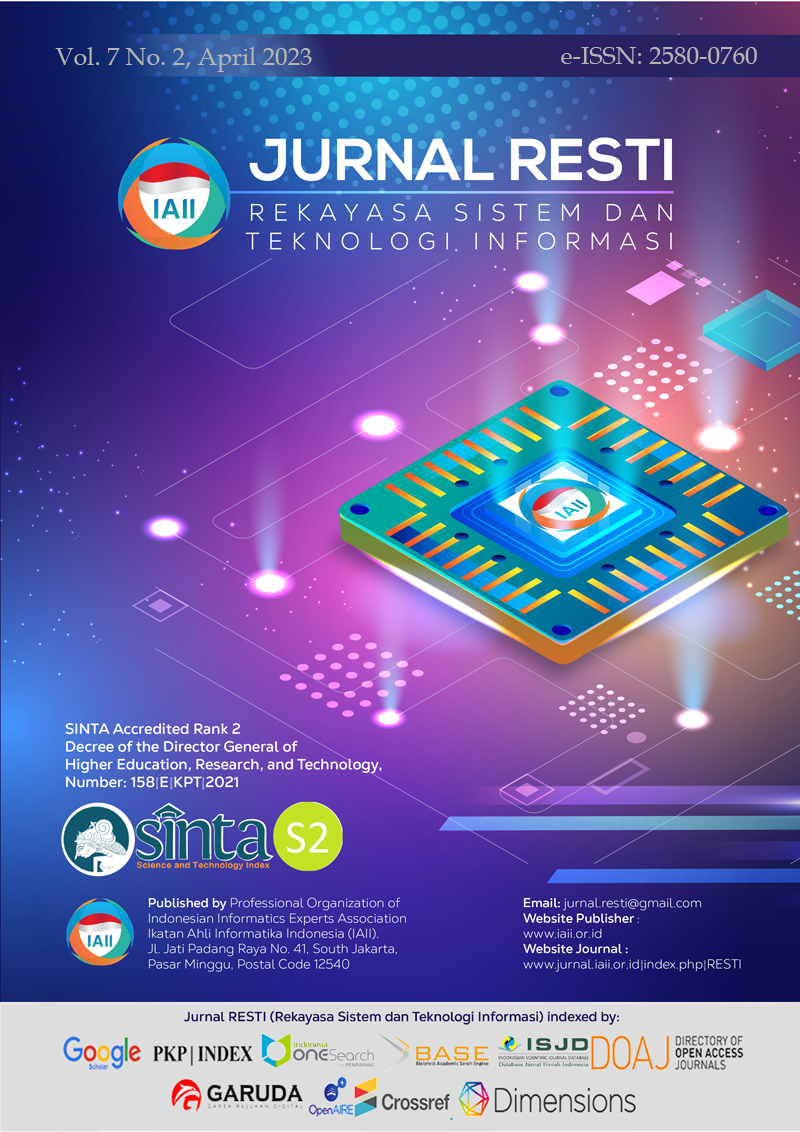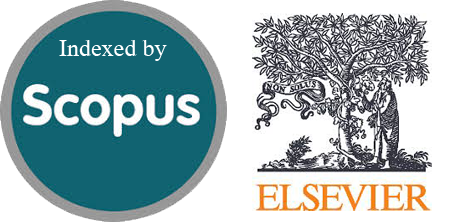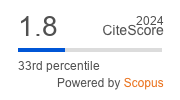Sentiment Analysis of Electricity Company Service Quality Using Naïve Bayes
Abstract
In facing the era of technological disruption, a large company providing electricity in Indonesia, namely PT PLN is transforming to digitize all business processes and improve the quality of customer service. PLN Mobile application was developed in December 2020, and 18 million users have downloaded it. PLN Mobile application provides various electrical services for users. There are a lot of online opinions today. Organizations need to know the public perception of their product or service, sales projections, and customer happiness. Our research will identify public opinion (positive and negative) about PLN Mobile Application using sentiment analysis by taking review data from Google Play Store. Sentiment analysis is classified using Naïve Bayes and analyzed based on the dimensions of the quality of electricity services: empathy, responsiveness, and reliability. The results of this study indicate that Naïve Bayes is quite well used for binomial labels (positive and negative) with an accuracy of 73%. Still, for service quality dimensions, the accuracy is 45%. Indonesian language datasets are quite difficult to process due to non-standard language, foreign words, mixed language variations, and abbreviations. Determination of ground truth or manual labeling requires consistency and skilled personnel to determine the context of the text data to obtain a model with optimal performance. This study informs the classification of each dimension of the quality of electricity services in Indonesia based on positive and negative sentiment data for PLN Mobile Application users. Reliability received the most negative sentiments. This can be used for PT PLN to improve the quality-of-service reliability to customers.
Downloads
References
S. Achchuthan, N. Sivathaasan, and J. M. R. S. Jayasundara, “Service quality dimensions of electricity services: Evidence from electricity board in Sri Lanka,” Asian Soc. Sci., vol. 10, no. 17, pp. 194–203, 2014, doi: 10.5539/ass.v10n17p194.
M. A. Paredes-Valverde, R. Colomo-Palacios, M. D. P. Salas-Zárate, and R. Valencia-García, “Sentiment Analysis in Spanish for Improvement of Products and Services: A Deep Learning Approach,” Sci. Program., vol. 2017, 2017, doi: 10.1155/2017/1329281.
B. Liu, Sentiment analysis: Mining opinions, sentiments, and emotions. 2015.
M. Cliche, “BB_twtr at SemEval-2017 Task 4: Twitter Sentiment Analysis with CNNs and LSTMs,” no. 2014, pp. 573–580, 2018, doi: 10.18653/v1/s17-2094.
A. Severyn and A. Moschitti, “UNITN: Training Deep Convolutional Neural Network for Twitter Sentiment Classification,” SemEval 2015 - 9th Int. Work. Semant. Eval. co-located with 2015 Conf. North Am. Chapter Assoc. Comput. Linguist. Hum. Lang. Technol. NAACL-HLT 2015 - Proc., no. SemEval, pp. 464–469, 2015, doi: 10.18653/v1/s15-2079.
Samsir, Kusmanto, Abdul Hakim Dalimunthe, Rahmad Aditiya, and Ronal Watrianthos, “Implementation Naïve Bayes Classification for Sentiment Analysis on Internet Movie Database,” Building of Informatics, Technology and Science (BITS), vol. 4, no. 1, pp. 1–6, Jun. 2022.
M. Ilham and Zarnelly, “Analisis Penerimaan Aplikasi Pln Mobile Menggunakan Technology Acceptance Model (Tam),” J. Ilm. Rekayasa dan Manaj. Sist. Inf., vol. 7, no. 1, pp. 58–59, 2021.
H. B. Tambunan and T. W. D. Hapsari, “Analisis Opini Pengguna Aplikasi New PLN Mobile Menggunakan Text Mining,” Petir, vol. 15, no. 1, pp. 121–134, 2021, doi: 10.33322/petir.v15i1.1352.
J. I. Dan, “Penerapan Algoritma Naïve Bayes Classifier Menggunakan R-Programming Untuk Pengelompokan Jenis Keluhan Aplikasi Pln Mobile,” vol. 2, no. 1, pp. 19–30, 2022.
H. S. Batubara, Ambiyar, Syahril, Fadhilah, and R. Watrianthos, “Sentiment Analysis of Face-To-Face Learning Based on Social Media,” Jurnal Pendidikan Teknologi Kejuruan, vol. 4, no. 3, pp. 102–106, 2021.
M. Adlim, A. Wiguna, and D. Nugraha, “Implementasi Quality Of Service (Qos) Dan Penerapan Algoritma Naïve Bayes Pada Jaringan Wifi Universitas Pgri Kanjuruhan Malang,” JATI J. Mhs. Tek. Inform., vol. 6, no. 2, pp. 469–475, 2022.
S. Jawneh and M. Manneh, “Service Quality Determinants of Electricity Consumers in The Gambia,” Eur. J. Bus. Manag. Res., vol. 5, no. 4, pp. 1–8, 2020, doi: 10.24018/ejbmr.2020.5.4.431.
A. S. Olayinka, O. O. Joseph, O. J. Surajudeen, and T. A. Adeyinka, “Service Quality and Customer Satisfaction of Electricity Distribution Company: A Study of Olumo Business Hub, Abeokuta, Ogun State,” Asian J. Econ. Bus. Account., vol. 8, no. 4, pp. 1–18, 2018, doi: 10.9734/ajeba/2018/44493.
G. Panteloukas, A. Asopo, and R. Buwag, “A review of Perceived Service Quality :An empirical investigation of grocery stores’ customers in Växjö, Sweden,” Sch. Res. J. Interdiscip. Stud., p. 62, 2012.
H. E. Abeku, “Assessing Customer Satisfaction on Service Delivery of Cooperative Bank of Oromiya Nekemte Branch,” vol. 8, no. 3, pp. 50–61, 2022, doi: 10.11648/j.ajtab.20220803.13.
Samsir et al., “Naives Bayes Algorithm for Twitter Sentiment Analysis,” J Phys Conf Ser, vol. 1933, no. 1, p. 012019, 2021, doi: 10.1088/1742-6596/1933/1/012019.
A. Parasuraman, V. A. Zeithaml, and L. L. Berry, “Reassessment of Expectations as a Comparison Standard in Measuring Service Quality: Implications for Further Research,” J. Mark., vol. 58, no. 1, p. 111, 1994, doi: 10.2307/1252255.
S. Satapathy and P. Mishra, “A customer oriented systematic framework to extract business strategy in Indian electricity services,” J. Ind. Eng. Int., vol. 9, no. 1, pp. 1–18, 2013, doi: 10.1186/2251-712X-9-33.
S. Schlosser, D. Toninelli, and M. Cameletti, “Comparing methods to collect and geolocate tweets in Great Britain,” J. Open Innov. Technol. Mark. Complex., vol. 7, no. 1, pp. 1–20, 2021, doi: 10.3390/joitmc7010044.
P. Prasojo and D. Novrina, “Content Analysis on Media Online,” Int. J. Res. Publ., vol. 59, no. 1, pp. 34–42, 2020, doi: 10.47119/ijrp100591820201389.
J. H. Jaman, R. Abdulrohman, A. Suharso, N. Sulistiowati, and I. P. Dewi, “Sentiment analysis on utilizing online transportation of indonesian customers using tweets in the normal era and the pandemic covid-19 era with support vector machine,” Adv. Sci. Technol. Eng. Syst., vol. 5, no. 5, pp. 389–394, 2020, doi: 10.25046/AJ050549.
Rianto, A. B. Mutiara, E. P. Wibowo, and P. I. Santosa, “Improving the accuracy of text classification using stemming method, a case of non-formal Indonesian conversation,” J. Big Data, vol. 8, no. 1, pp. 1–16, 2021, doi: 10.1186/s40537-021-00413-1.
M. S. Mubarok, A. Adiwijaya, and M. D. Aldhi, “Aspect-based sentiment analysis to review products using Naïve Bayes,” AIP Conf. Proc., vol. 1867, no. August, 2017, doi: 10.1063/1.4994463.
Peter D. Turney, “Thumbs up or thumbs down?: semantic orientation applied to unsupervised classification of reviews. In ACL ’02: Proceedings of the 40th Annual Meeting on Association for Computational Linguistics, pages 417–424, Morristown, NJ, USA, 2001. Ass,” Society, vol. 12, no. 3, pp. 417–424, 2002, [Online]. Available: http://www.google.com.
M. Taboada, J. Brooke, and K. Voll, “Lexicon-Based Methods for Sentiment Analysis,” no. September 2010, 2011.
A. I. Pandesenda, R. R. Yana, E. A. Sukma, A. Yahya, P. Widharto, and A. N. Hidayanto, “Sentiment Analysis of Service Quality of Online Healthcare Platform Using Fast Large-Margin,” Proc. - 2nd Int. Conf. Informatics, Multimedia, Cyber, Inf. Syst. ICIMCIS 2020, pp. 121–125, 2020, doi: 10.1109/ICIMCIS51567.2020.9354295.
M. S. Alrajak, I. Ernawati, and I. Nurlaili, “Analisis Sentimen Terhadap Pelayanan PT PLN di Jakarta pada Twitter dengan Algoritma K- Nearest Neighbor (K-NN),” Semin. Nas. Mhs. Ilmu Komput. dan Apl., pp. 110–122, 2020.
S. A. S. Herjunaa, G. A. Fatonib, and A. Yakub, “Penerapan Algoritma Naïve Bayes Classifier Menggunakan R-Programming Untuk Pengelompokan Jenis Keluhan Aplikasi Pln Mobile,” vol. 2, no. 1, pp. 19–30, 2022.
Copyright (c) 2023 Jurnal RESTI (Rekayasa Sistem dan Teknologi Informasi)

This work is licensed under a Creative Commons Attribution 4.0 International License.
Copyright in each article belongs to the author
- The author acknowledges that the RESTI Journal (System Engineering and Information Technology) is the first publisher to publish with a license Creative Commons Attribution 4.0 International License.
- Authors can enter writing separately, arrange the non-exclusive distribution of manuscripts that have been published in this journal into other versions (eg sent to the author's institutional repository, publication in a book, etc.), by acknowledging that the manuscript has been published for the first time in the RESTI (Rekayasa Sistem dan Teknologi Informasi) journal ;








